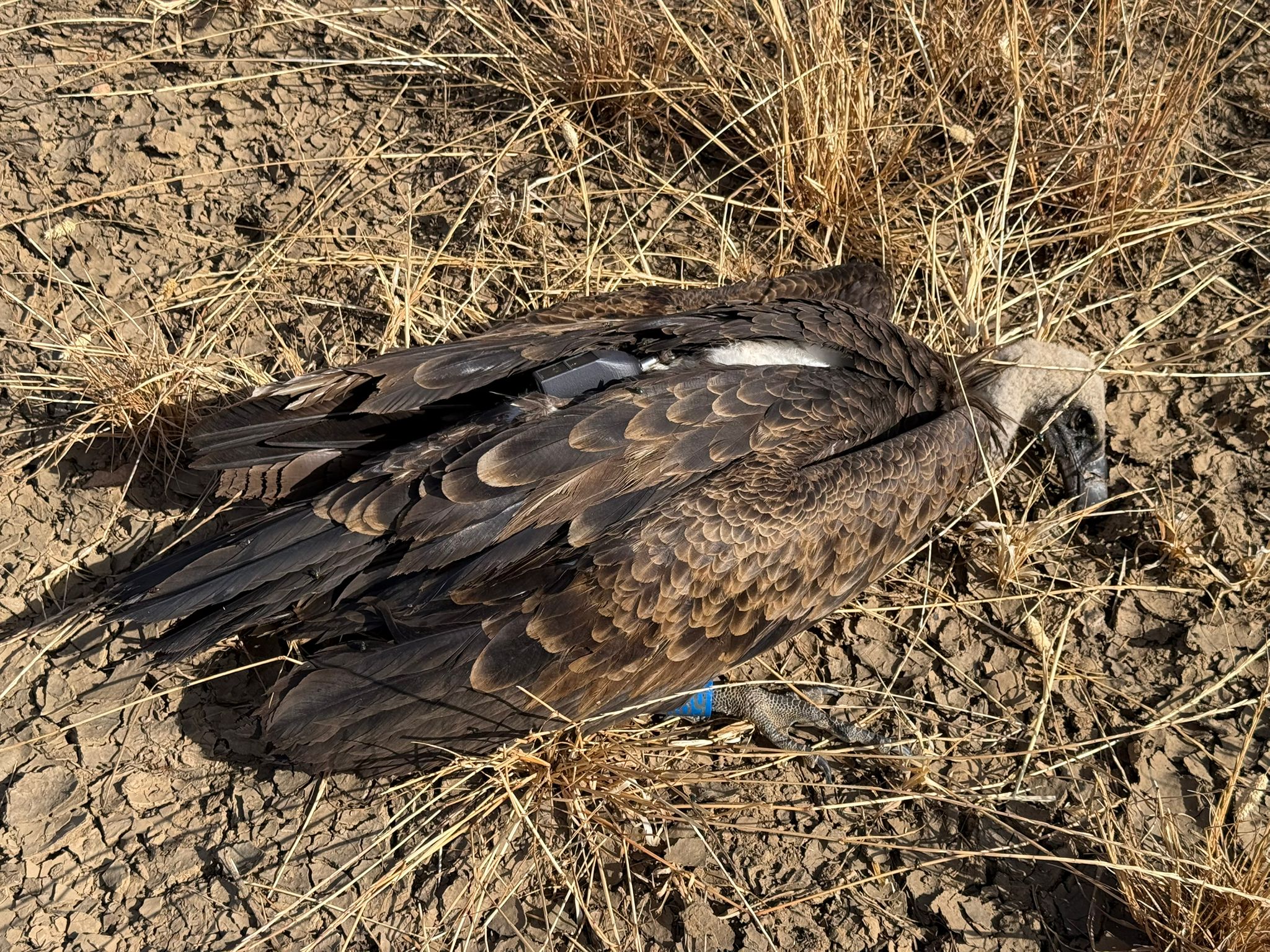
For the first time ever, a team of conservationists equipped a Bearded Vulture nestling that hatched in the Italian Alps with a GPS tag. This action allows us to better understand the behaviour of young wild-hatched Bearded Vultures and therefore implement more accurate conservation actions as part of the Alpine reintroduction project.
Equipping a GPS tag on a wild Bearded Vulture nestling in Italy
On June 12 2020, a team of conservationists, alongside an expert climber and mountain guide, were on a mission to mark a juvenile Bearded Vulture still in the nest with a GPS tag in Livigno, situated in the heart of the Italian Alps. Once the Stelvio National Park team coordinated by Enrico Bassi reached the remote cliffs, the expert climber Adriano Greco had to retrieve the young vulture named Penti2020 from the inaccessible nest and carefully hand over the bird to the conservationists. Then, Franziska Lörcher from the Vulture Conservation Foundation (VCF) marked the young vulture with a GPS tag for monitoring purposes. Furthermore, the team also ringed the vulture, noted biometric measurements, retrieved a blood same for lead analysis and collected feathers for genetic analysis, revealing that the vulture was female and is a descendant of Cic and Moische. Both parents were released in the Swiss Nationalpark in 1993 and 1991, respectively. Since 2000, they raised 18 chicks together. This is the first time a wild-hatched chick was marked in Italy and is a significant step for the research programme accompanying Bearded Vulture reintroduction in the Alps.
Importance of tagging wild-hatched Bearded Vulture nestlings
Modern monitoring methods, such as GPS-tags, have been continuously developed and proved a crucial tool to study and preserve the reintroduced Bearded Vulture population. GPS data provide valuable information on mortality cases and the spatial behaviour of the released birds. In the past couple of years, within the scope of the International Bearded Vulture Monitoring Network (IBM), 13 wild-hatched nestlings have been equipped with GPS tags, including Penti2020, to attain a deeper understanding of their behaviour. Thanks to the GPS tag on Penti2020’s back, we noticed that in early winter, this young vulture started travelling further away from the hatching place, visiting Austria and Switzerland. You can now follow the movements of the young female by visiting the online map.
Staff involved in this action: Franziska Loercher, Andrea Roverselli, Adriano Greco, Gilberto Volcan, Laura Tomasi, Walter Anselmi, Juri Baruffaldi, Stazione Carabinieri “Parco” di Livigno and Enrico Bassi.

Stampa 



Bearded Vulture reintroduction in the Alps

The Bearded Vulture was driven to extinction in the Alps during the 20th Century, and to bring the species back, pioneers from all Alpine countries initiated the reintroduction project in the 1970s. The first birds were released in 1986 at Hohe Tauern National Park, Austria, and in 1997 the first breeding pair successfully raised a chick in the wild in France, followed in 1998 by the first italian reproduction occurred in Stelvio National Park. Today, there are between 250 and 300 Bearded Vultures across the Alps. In 2020, 36 juvenile Bearded Vultures fledged in the wild out of the 52 breeding pairs. This reintroduction project has sparked the imagination and gathered the support of many stakeholders across the Alpine chain and is considered one of the best wildlife comeback stories of all times!
International Bearded Vulture Monitoring Network

The International Bearded Vulture Monitoring Network (IBM) is a unique international collaboration led by the Vulture Conservation Foundation between national & natural parks and non-governmental organizations to coordinate the monitoring activities for European Bearded Vulture populations. Through this network, data about the Bearded Vulture in Europe is collected, shared and made available to everyone working for the conservation of the species. The IBM-network also uses this data and comes together to discuss conservation strategies and priorities for this species on an international level. There are currently 16 partners and two associated organizations part of the IBM-network.
If you have any Bearded Vulture observations and photographs in the Alps, please report them here.

To stay tuned with Bearded Vultures in Europe, subscribe to the VCF’s newsletter!



